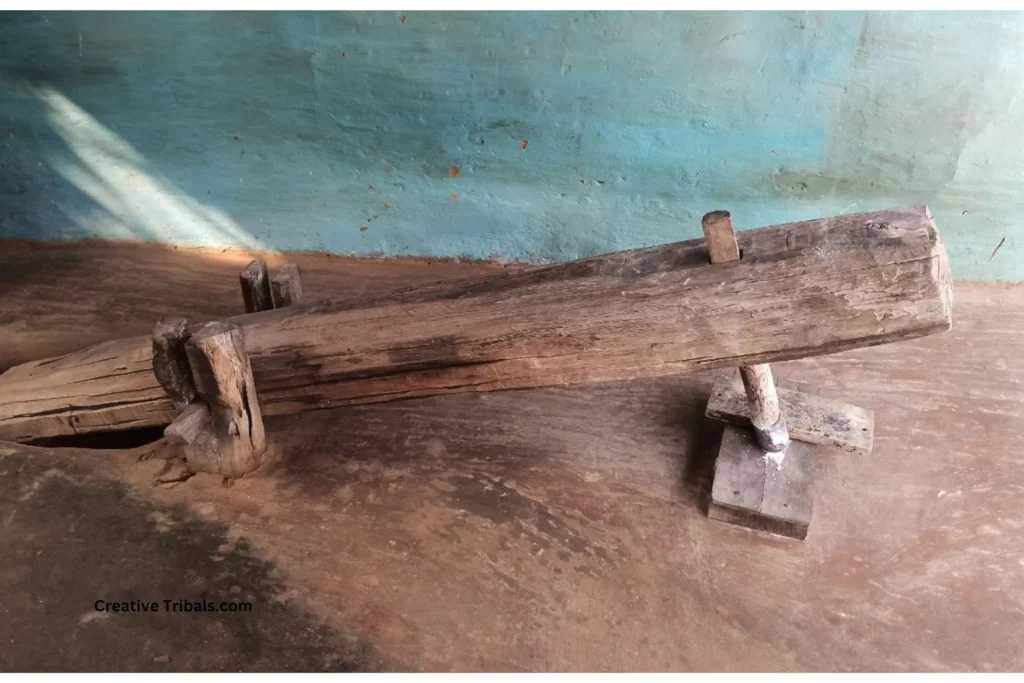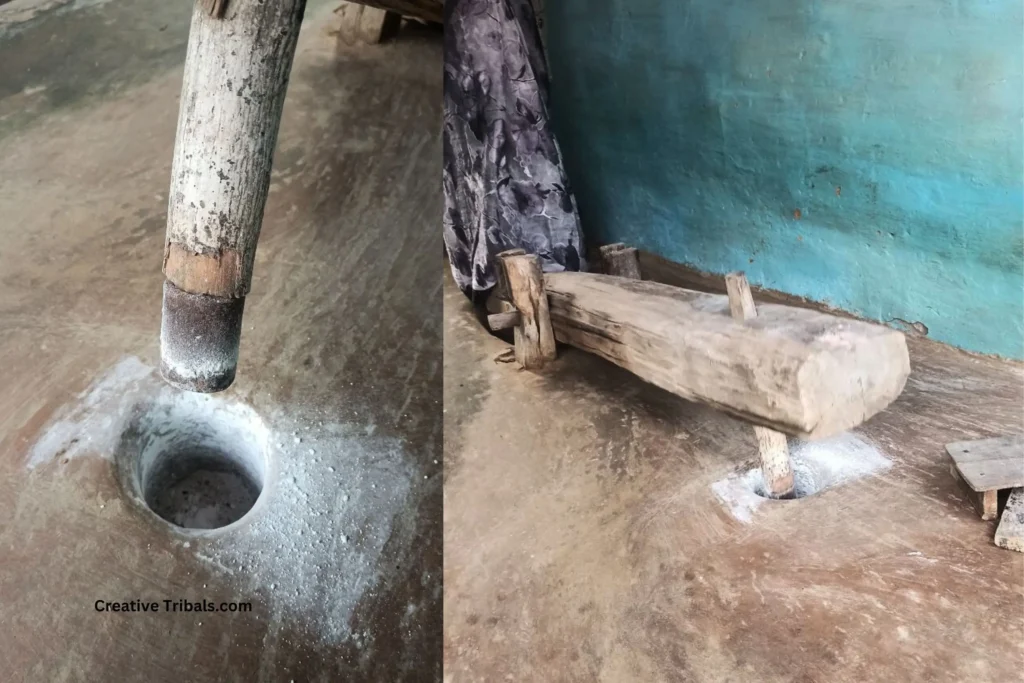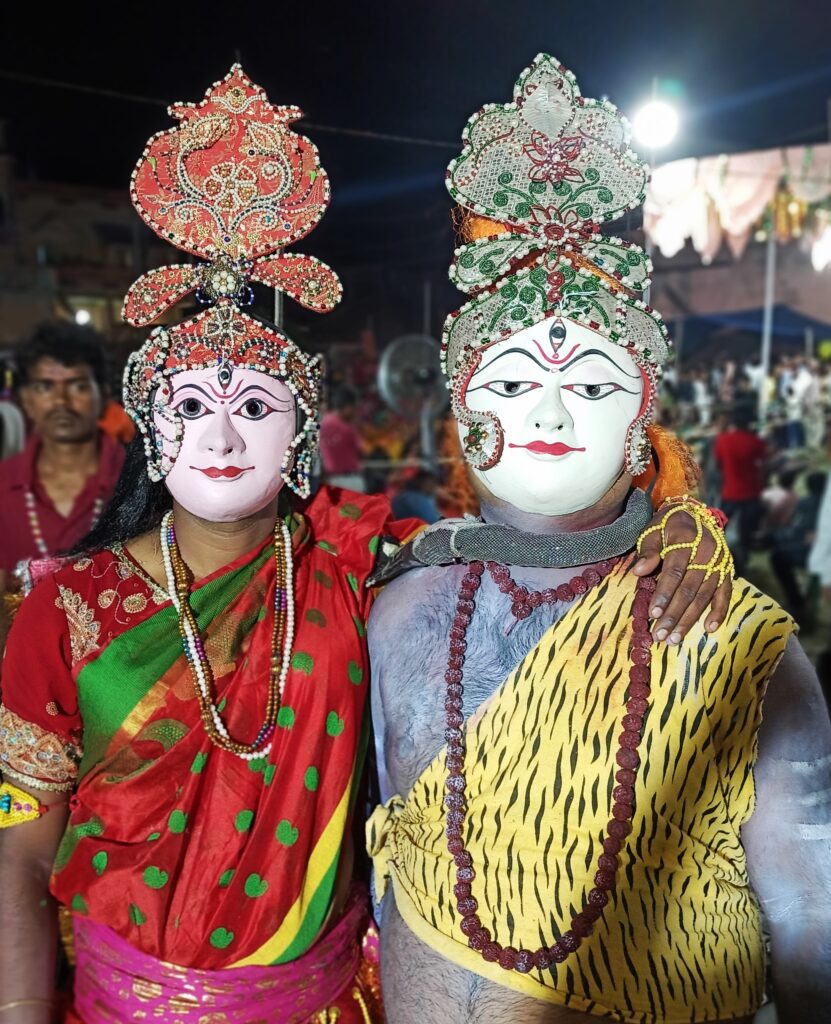The Dheki is a wooden foot-operated rice husking pedal that is used in an ancient traditions deep in the heart of India, in the lush landscapes of Jharkhand and Odisha. This clever device, which has been passed down through the years, is evidence of the area’s strong ties to agriculture and rich cultural legacy.



The Workings of the Dheki:
The Dheki is a simple but useful tool. It is made up of a foot pedal-operated mortar and pestle. When the paddy is put inside the mortar, the user pushes the pedal repeatedly, which causes the rice to be pounded by the pestle and separated from the edible grain husk. Though it may look simple, the Dheki’s design guarantees effective husking, protecting the rice’s delicate bran layer, which adds to its flavour and nutritional value.


Beyond Functionality: A Cultural Symbol:
The Dheki is more than just a useful tool. It is deeply integrated into Odisha’s and Jharkhand’s cultural heritage. The sound of the pestle beating rhythmically against the mortar frequently provides the background music for festivities and daily activity in villages. In indigenous societies, where it is more than simply a tool, the Dheki is a representation of independence and camaraderie.
In Jharkhand and odisha, dheki is traditionally used to husk rice for various festive dishes, including those prepared during Makar Sankranti.
Tradition and Modernity in Balance:
The development of modern rice mills that provide larger-scale, quicker processing has presented problems for the Dheki in recent years. But the Dheki is still popular, particularly in isolated places and among groups who appreciate the traditional flavour and calibre of rice made this way.
The Prospects for the Dheki:
Achieving a balance between tradition and modernity is crucial for the future of the Dheki. Modern rice mills serve large-scale production, but the Dheki may be marketed to specialised markets looking for premium, organic rice. Furthermore, by promoting the Dheki’s relevance in rural life and educating the public, attempts may be made to maintain its cultural value.
How to Make a Dheki
A dheki is a traditional rice-pounding tool used in many parts of the world. It is a simple but effective device that can be made from a variety of materials.


Here are the basic steps on how to make a dheki:
- Gather your materials. You will need two long pieces of wood, a heavy object (such as a rock or a piece of metal), and some rope or twine.
- Prepare the wood. The two pieces of wood should be about the same length and thickness. They should also be smooth and free of knots.
- Attach the heavy object. The heavy object will be used to pound the rice. It should be attached to one end of each piece of wood using rope or twine.
- Test the dheki. Once the dheki is assembled, you can test it out by pounding some rice. Make sure that the heavy object is heavy enough to pound the rice effectively.
Here are some additional tips for making a dheki:
- Use strong, durable wood that will not easily break.
- Make sure that the heavy object is securely attached to the wood.
- Adjust the length of the rope or twine so that the dheki is comfortable to use.
- Practice using the dheki before you start pounding rice.
With a little bit of time and effort, you can easily make your own dheki. This simple tool can be used to pound rice, beans, and other grains. It is a great way to add a touch of tradition to your kitchen.

